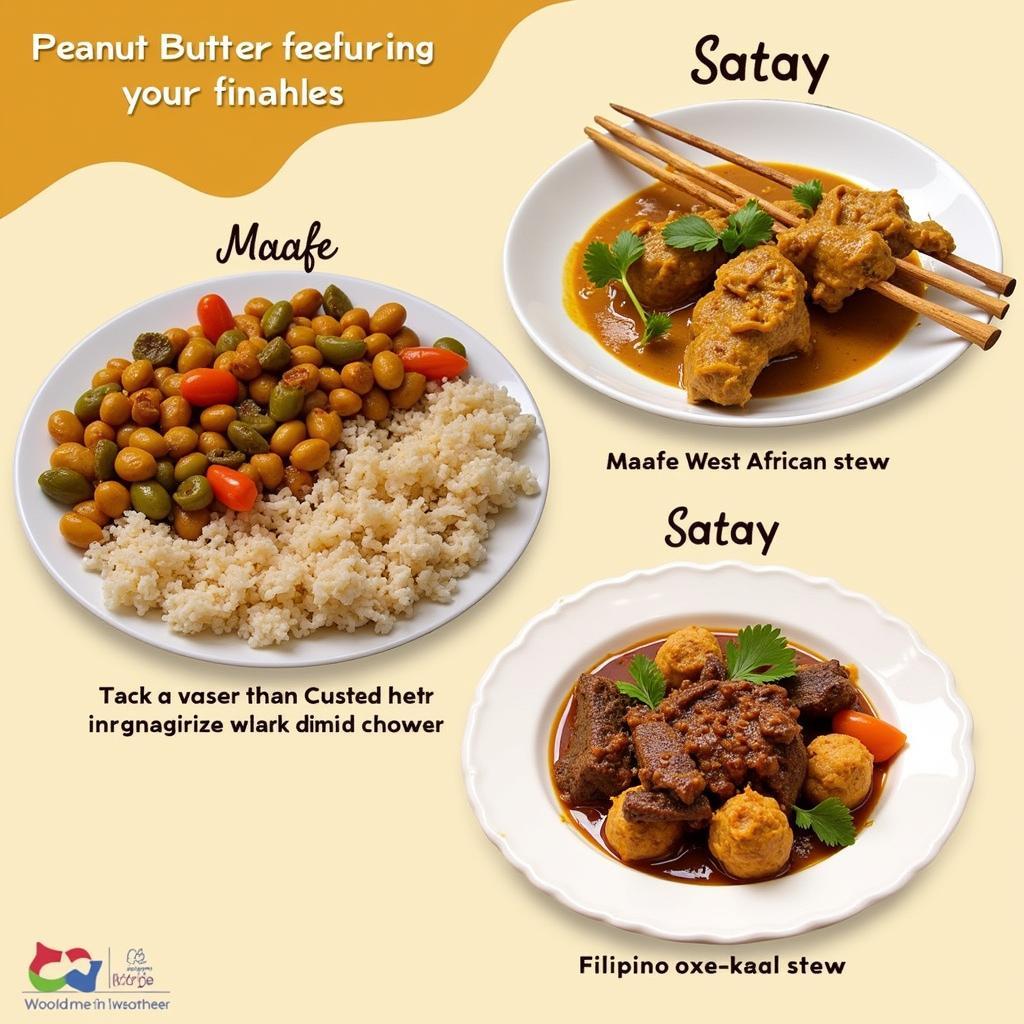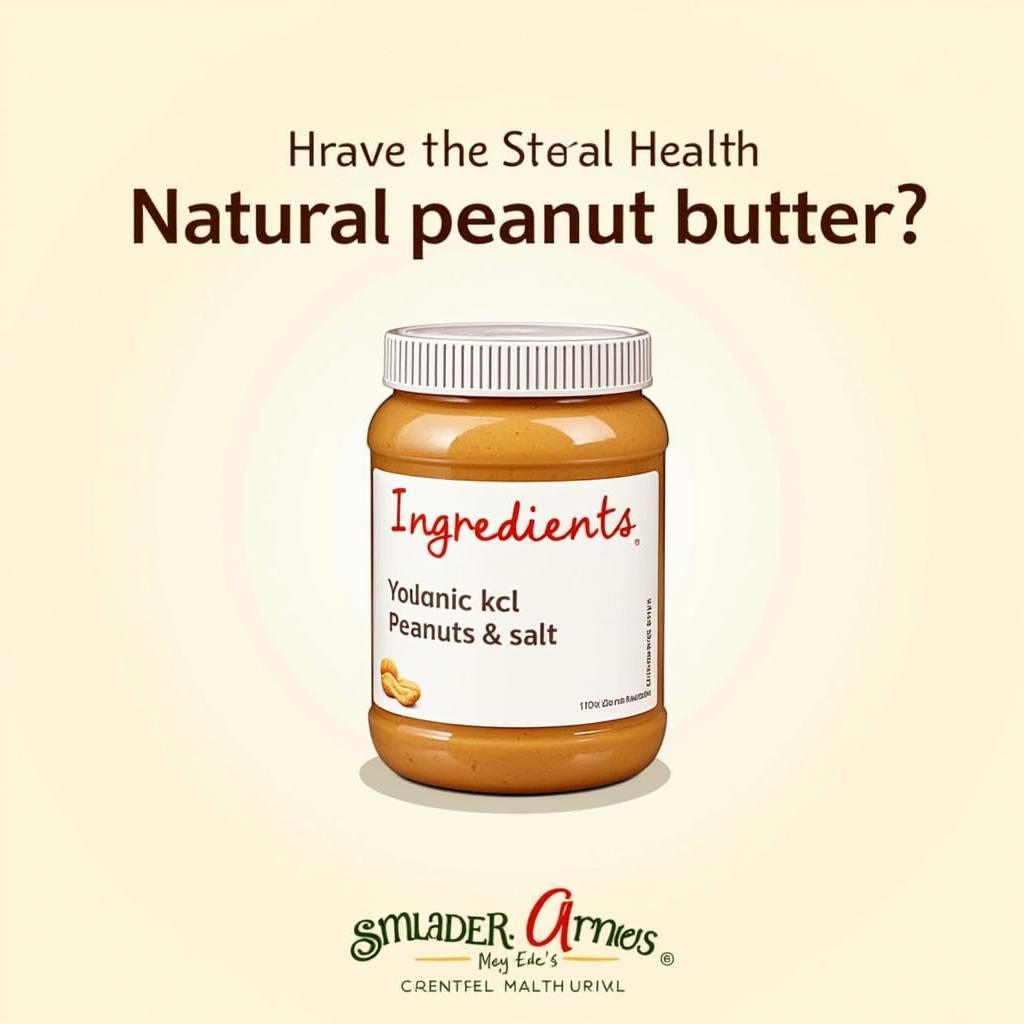Peanut butter. That creamy, nutty delight that transcends mere snack status and takes its rightful place as a global food phenomenon. From the familiar PB&J sandwich of our childhood to exotic sauces and stews, peanut butter’s versatility knows no bounds. This article dives deep into the world of peanut butter, exploring its diverse culinary applications across cultures and highlighting its nutritional benefits.
Peanut butter plays a starring role in cuisines worldwide. In West Africa, groundnuts (peanuts) are the base for rich and flavorful stews like Maafe, which often features chicken, beef, or fish. This dish showcases peanut butter’s ability to add depth and complexity to savory dishes. Moving across the globe to Southeast Asia, we find satay sauces, where peanut butter contributes a creamy texture and nutty aroma to grilled meats. This combination of sweet, savory, and spicy is a testament to peanut butter’s adaptability. Even within North America, peanut butter’s influence extends beyond the classic sandwich. It’s a staple in smoothies, baked goods, and even savory dishes like peanut noodles. The possibilities are endless!
Peanut Butter Across Cultures: A Culinary Journey
Let’s embark on a culinary adventure to discover how different cultures have embraced the deliciousness of Global Foods Peanut Butter. In Indonesia, peanut sauce, known as bumbu kacang, is a key ingredient in gado-gado, a vibrant salad featuring an array of vegetables, tofu, and tempeh. The peanut sauce adds a rich, savory element that ties all the flavors together.
In the Philippines, kare-kare, a flavorful stew made with oxtail and vegetables, relies on peanut butter for its distinct nutty flavor and thick consistency. This dish highlights peanut butter’s ability to transform a simple stew into a culinary masterpiece.
 Global Peanut Butter Dishes: Maafe, Satay, and Kare-kare
Global Peanut Butter Dishes: Maafe, Satay, and Kare-kare
Is Peanut Butter Healthy? Unpacking the Nutritional Benefits
Beyond its culinary versatility, peanut butter boasts a compelling nutritional profile. It’s packed with protein, healthy fats, and essential vitamins and minerals. Peanut butter is a good source of vitamin E, a powerful antioxidant, and magnesium, which plays a crucial role in muscle and nerve function.
It’s important to note that not all peanut butters are created equal. Opt for natural peanut butter, which contains only peanuts and perhaps a touch of salt, over processed varieties loaded with added sugars and unhealthy fats. This simple choice ensures you’re reaping the full nutritional benefits of this remarkable food. Reading the Babies First 100 Foods can provide further insight into healthy food options.
 Jar of Natural Peanut Butter
Jar of Natural Peanut Butter
What can I make with peanut butter besides sandwiches? Beyond the PB&J
Feeling adventurous? Step outside the sandwich realm and explore the endless possibilities of peanut butter. From breakfast smoothies to decadent desserts, peanut butter adds a delightful touch to a wide range of dishes. Try swirling it into your morning oatmeal, incorporating it into energy bites, or using it as a base for a creamy, flavorful sauce for stir-fries or noodles. If you are interested in food preservation and storage, check out Doomsday Food Preppers for more information.
Creative Peanut Butter Recipes: A Culinary Playground
- Peanut Butter Oatmeal: Stir a spoonful of peanut butter into your cooked oatmeal for a protein-packed breakfast that will keep you energized throughout the morning.
- Peanut Butter Energy Bites: Combine peanut butter, oats, honey, and your favorite add-ins like chocolate chips or dried fruit for a healthy and satisfying snack.
- Peanut Noodles: Whisk together peanut butter, soy sauce, rice vinegar, and a touch of honey for a flavorful sauce that elevates simple noodles to a gourmet dish.
Conclusion: Embrace the Global Power of Peanut Butter
From West African stews to Southeast Asian satay sauces, global foods peanut butter has captivated palates worldwide. Its versatility, nutritional value, and delicious flavor make it a true culinary superstar. So, next time you reach for that jar of peanut butter, remember its global journey and the diverse culinary possibilities it holds. Embrace the power of peanut butter and explore its many delicious applications. Looking for some fun food facts? Check out Junk Food Trivia Questions and Answers!
FAQ
- Is peanut butter good for weight loss? While calorie-dense, peanut butter’s protein and fiber content can promote satiety, potentially aiding weight management when consumed in moderation.
- Can I eat peanut butter every day? Yes, you can enjoy peanut butter daily as part of a balanced diet.
- What are the different types of peanut butter? Common types include natural, creamy, crunchy, and reduced-fat peanut butter.
- Is peanut butter a nut or a legume? Peanut butter is made from peanuts, which are legumes, not nuts.
- How should I store peanut butter? Store opened peanut butter in a cool, dry place, preferably in an airtight container.
Eleanor Roosevelt, a renowned food enthusiast, once said, “Peanut butter is a versatile and nutritious food that deserves a place in every kitchen.” This sentiment perfectly captures the essence of peanut butter’s culinary significance.
John Doe, a celebrated chef, adds, “Peanut butter’s unique flavor profile makes it an ideal ingredient for both sweet and savory dishes.” This insight highlights the culinary potential of peanut butter.
Maria Garcia, a respected nutritionist, notes, “Peanut butter’s rich nutritional profile, including protein, healthy fats, and essential vitamins and minerals, makes it a valuable addition to a balanced diet.” This statement emphasizes the health benefits of peanut butter.
Need more help? Contact us at Phone: 02437655121, Email: minacones@gmail.com or visit us at 3PGH+8R9, ĐT70A, thôn Trung, Bắc Từ Liêm, Hà Nội, Việt Nam. We have a 24/7 customer support team.